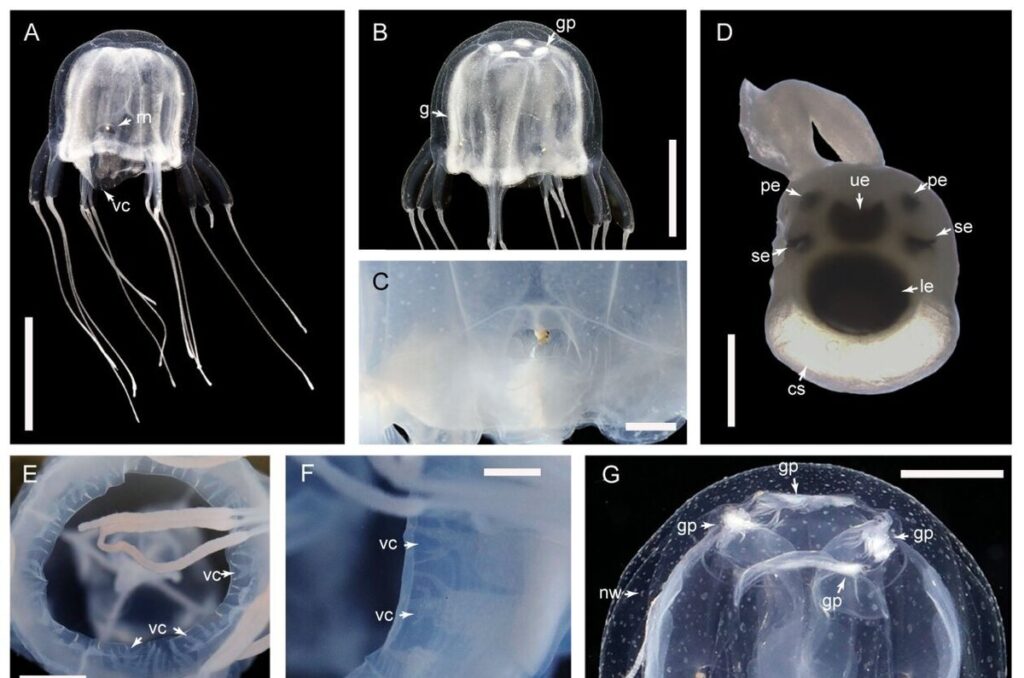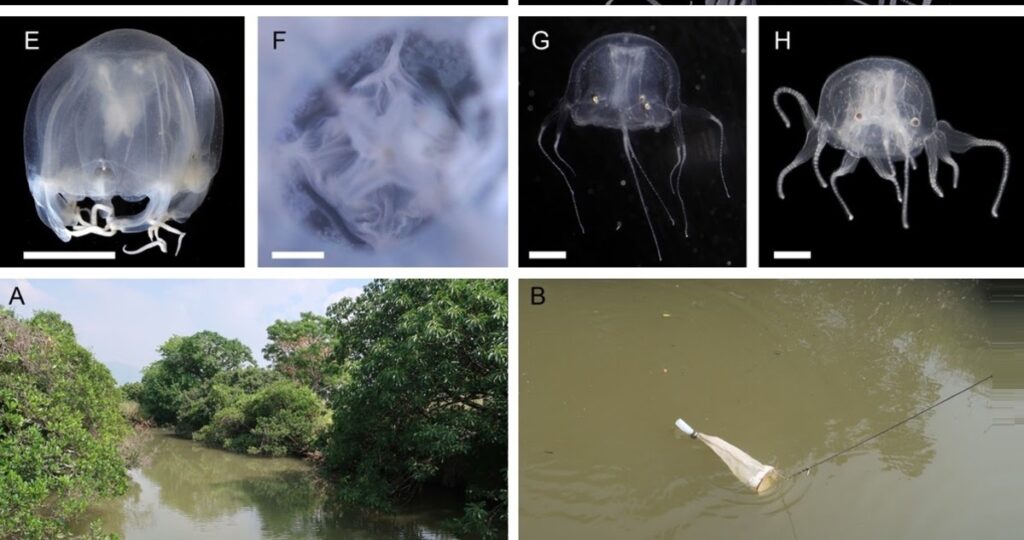Deep in the heart of Mai Po Nature Reserve in northern Hong Kong, researchers were conducting what they thought was routine water quality testing. Little did they know they were about to uncover a sensational find—a new species of jellyfish lurking in a greenish pond.
A Surprising Discovery Amidst Murky Waters
The team deployed their net into the murky waters, expecting to gather nothing more than the usual detritus and perhaps a few common aquatic species. However, when they drew the net back up, they were met with an astonishing sight: a cubic creature, sporting 24 eyes, staring right back at them. After careful examination, they realized they had stumbled upon a new species of box jellyfish, an exciting revelation published in the Zoological Studies journal.
Box jellyfish, named for their distinct cube-like shape, are known to house some of the most venomous creatures in the marine world. This particular specimen, now named Tripedalia maipoensis after the Mai Po region where it was found, is both genetically and physically distinct from its venomous cousins.
Meet the 24-Eyed Jellyfish

This newly discovered creature boasts a slightly white-tinted, transparent body, measuring less than a centimeter in length. Each corner of its boxy frame extends into three tentacles, culminating in a total of 24 eyes grouped in sets of six. The layout is particularly fascinating: each side features two larger eyes surrounded by four smaller ones. Two of these eyes are capable of forming images, while the remaining four detect light.
At the base of its tentacles, Tripedalia maipoensis has paddle-like structures that allow it to swim with remarkable speed. In a burst of swift motion, these jellyfish can propel themselves forward, navigating the waters with ease. Notably, this is the first box jellyfish species identified in Chinese waters, marking a significant milestone for local marine biology.
Why This Discovery Matters

The discovery of Tripedalia maipoensis is not just a thrilling narrative of unexpected findings in uncharted territories; it’s a testament to the hidden diversity and complexity of life that aquatic ecosystems harbor. Each new species discovered adds valuable data to our understanding of marine biology and helps in the ongoing efforts to conserve and protect aquatic habitats. Furthermore, understanding the venomous capabilities of such creatures can lead to advances in medical science, particularly in the development of antivenoms and other treatments.
This fascinating find reminds us that even in the most familiar environments, there are still mysteries waiting to be uncovered, pushing the boundaries of our knowledge and sparking the curiosity of scientists and nature enthusiasts alike.






